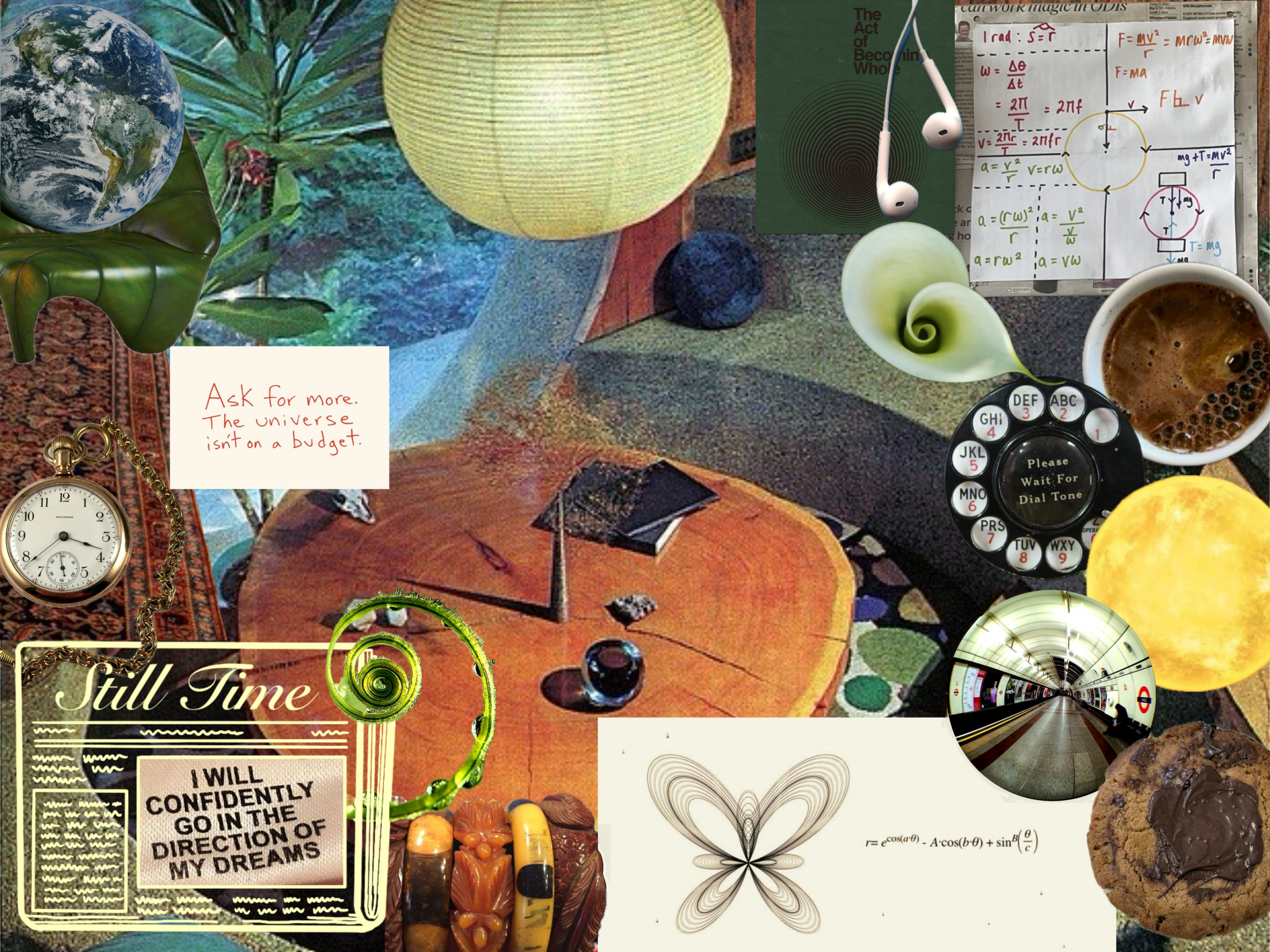We might be bang in the middle of Summer, temperatures scorching, tan lines forming but I’m going to need to call class to order for today’s article. Now, bear with me: it’s been a minute since I’ve waded into the deep waters of STEM, but some things never leave you.
And I, your sun-dazed, ever-enthusiastic professor, will be your guiding you through… Circular Motion.
Circular motion is movement along a circular path. Even if speed stays the same, the object is always accelerating—not because it’s getting faster, but because its direction keeps changing. In physics, that still counts as motion, even if you’re going in circles.
Here’s the first thing to note: you can be moving in circles, speed unchanged, and still be accelerating. Sounds a lot like life, doesn’t it? When you find yourself caught in any loop, it can feel like you’re making progress (or even moving faster and getting better) simply because you’re constantly changing direction. Every movement faces somewhere new, and that newness feels like a breath of fresh air.
But from the outside, the objects remain situated in the same space. Take the Earth orbiting the Sun as an example—we see the seasons change, the weather shift, and yet the Earth stays in a fixed path. And how often have 365 days passed in your life, only to realise you’ve been repeating cycles you wanted no part in?
That’s the illusion created by constantly changing direction—it feels like movement, acceleration, progress even. But sometimes, it’s just motion in place.
Centripetal acceleration is what keeps an object IN the circular path instead of flying off. It doesn’t increase speed — it changes direction, always pulling the object toward the centre of the circle.
So, you and I could be moving at the same speed: painfully slow or faster than lightning. We could be moving by foot, bike, or car (vehicular discrimination isn’t really my thing). But by a painful technicality, everyone would still be accelerating.
I can’t remember a time when life hasn’t felt like it’s accelerating. But how do I differentiate between the speed with all the changes in direction, when I’m in a cycle where speed isn’t the determinant of my acceleration—rather its direction. I’m always doing something—reacting, turning from one thing to the next. At the end of the day, I’m back where I started: tired from all the motion, unsure what’s really changed. It’s familiar, but frustrating.
As things keep shifting around me, I have to remind myself: there’s Still Time. But also, I need still time—quiet moments to slow down, process, and catch up with myself.
Here’s the thing: when an object moves in a circle, even if its speed stays the same, it’s constantly accelerating. Why? Because its direction is always changing. And any change in direction means acceleration. You can be going “nowhere”—spinning in place—and still be under constant force. That force, in physics, is what keeps you in orbit. In life, it just feels like pressure.
I’m not writing this as someone who’s mastered the art of stillness. I’m writing this as a procrastinator, a dreamer, someone who’s spent more time designing dreams than actually living them. I’ve built entire worlds in my head, detailed plans, timelines, Pinterest boards, shopping carts full of ambition—only to leave them untouched. Not because I didn’t care, but because I was so busy thinking, I forgetting to act… forgetting to live.
And my dreams have never been too big. That was never the problem. I just got stuck in the orbit of preparation. Spinning in place, calling it productivity. The idea of stillness—actual stillness, without noise, motion, or mental gymnastics is TERRIFYING. Because stillness, to me, equalled doing nothing. And nothing felt like failure.
And I kept wondering: how do you break the cycle?
Centripetal force is the inward force that maintains an object’s circular motion. It always points toward the centre of the circle and prevents the object from flying off in a straight line.
The physics answer is simple. You stop applying the force. You let go. No more centripetal pull, no more orbit. The object moves off in a straight line, free.
But in life, it’s messier. It’s not always about letting go entirely. Sometimes it’s about noticing the loop. Giving yourself stillness, Still Time, so you can catch the pattern, step back, and choose where to turn next.
This week, something shifted. I realised the space between stopping that force, stepping off the spinning ride, and beginning a new kind of motion… that is where the still time lives. Not as a void, but as a threshold. Not wasted, but necessary.
Still Time is where you stop orbiting your life and begin choosing your new path (hopefully not another circular one)
So if you’re feeling stuck in motion, looping through the same days, decisions, doubts—know this: acceleration isn’t always progress. And motion isn’t always meaning. You’re allowed to pause. You’re allowed to realign. There’s still time. And there’s time to be still.
Class dismissed.
